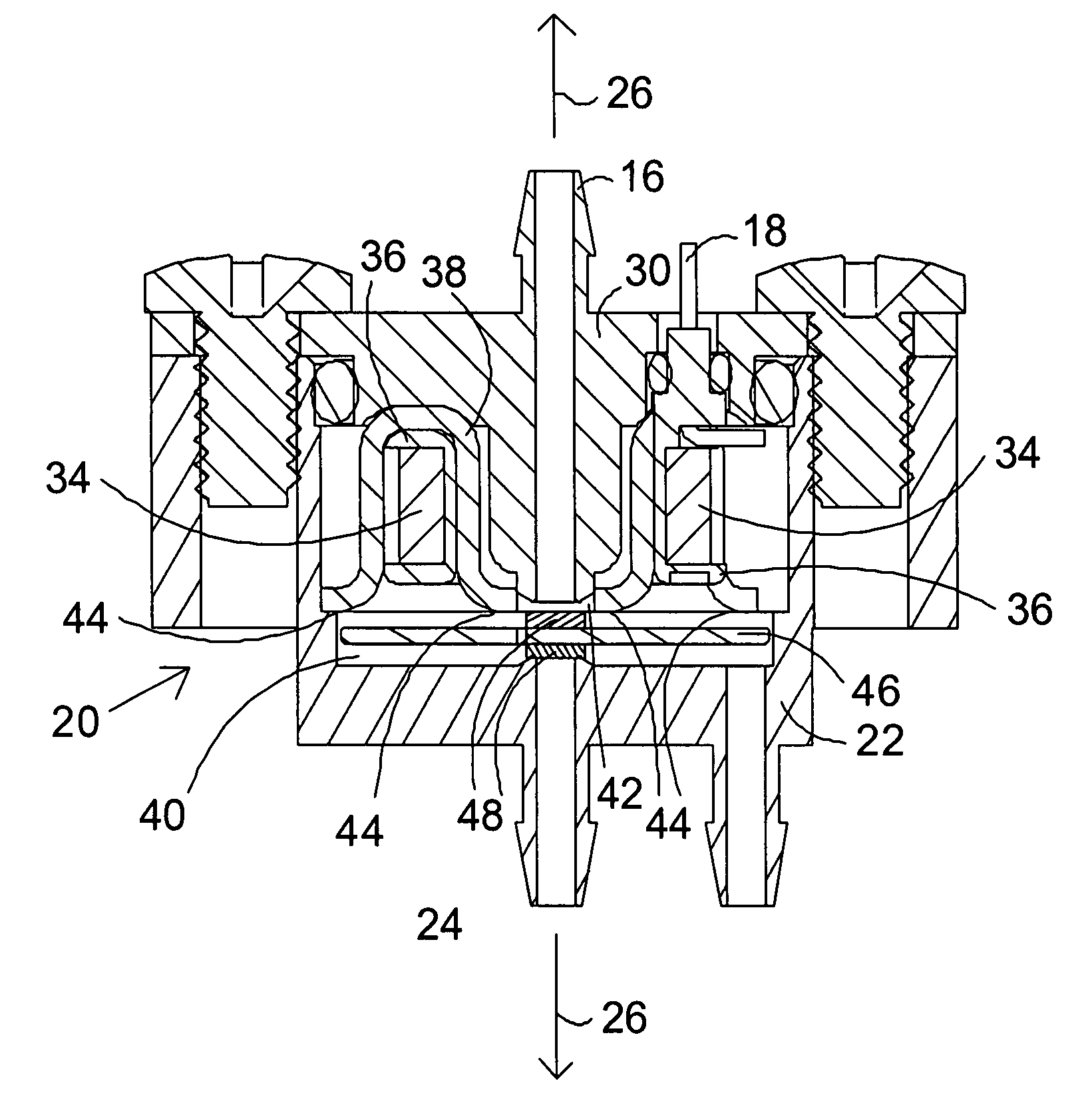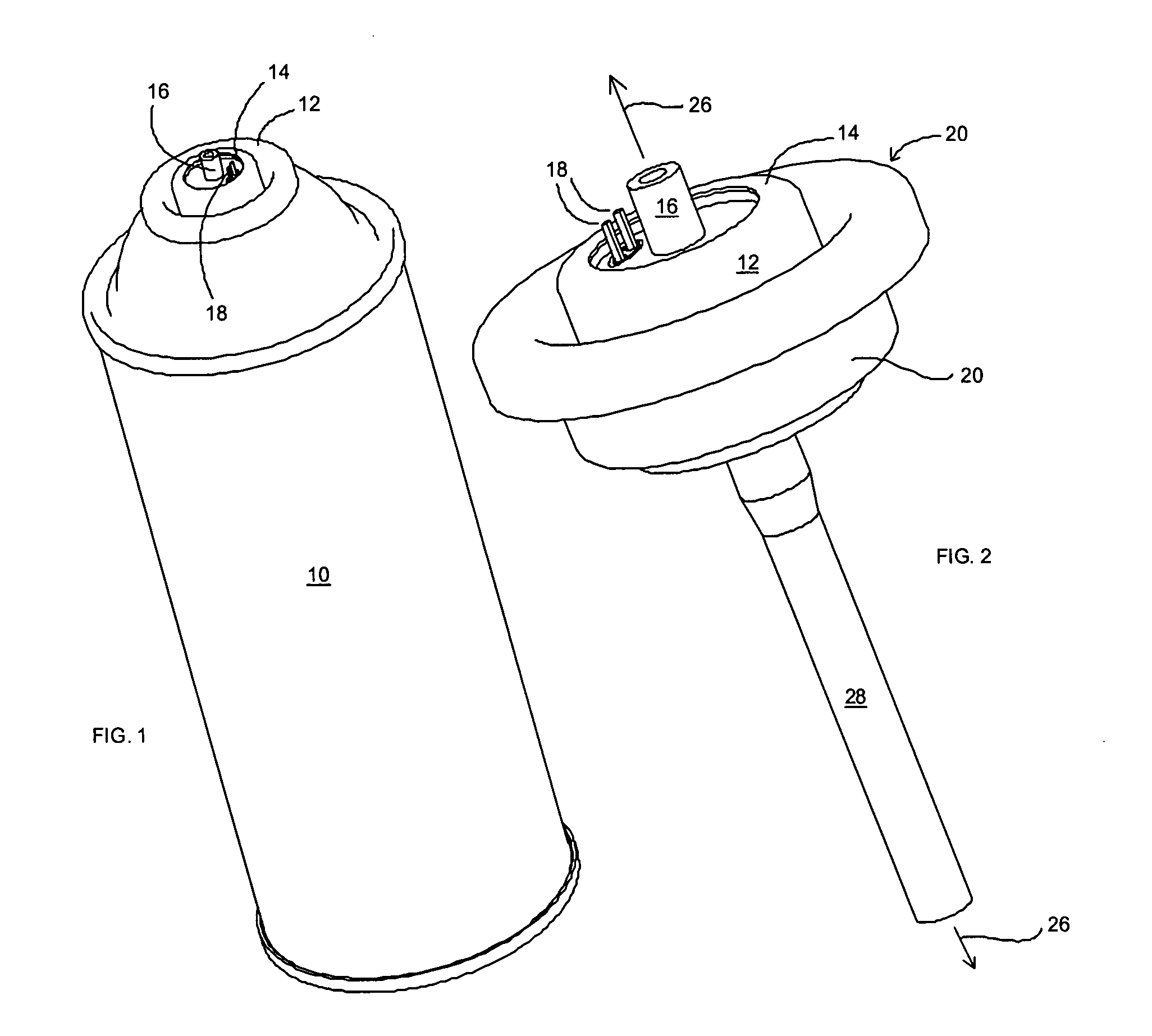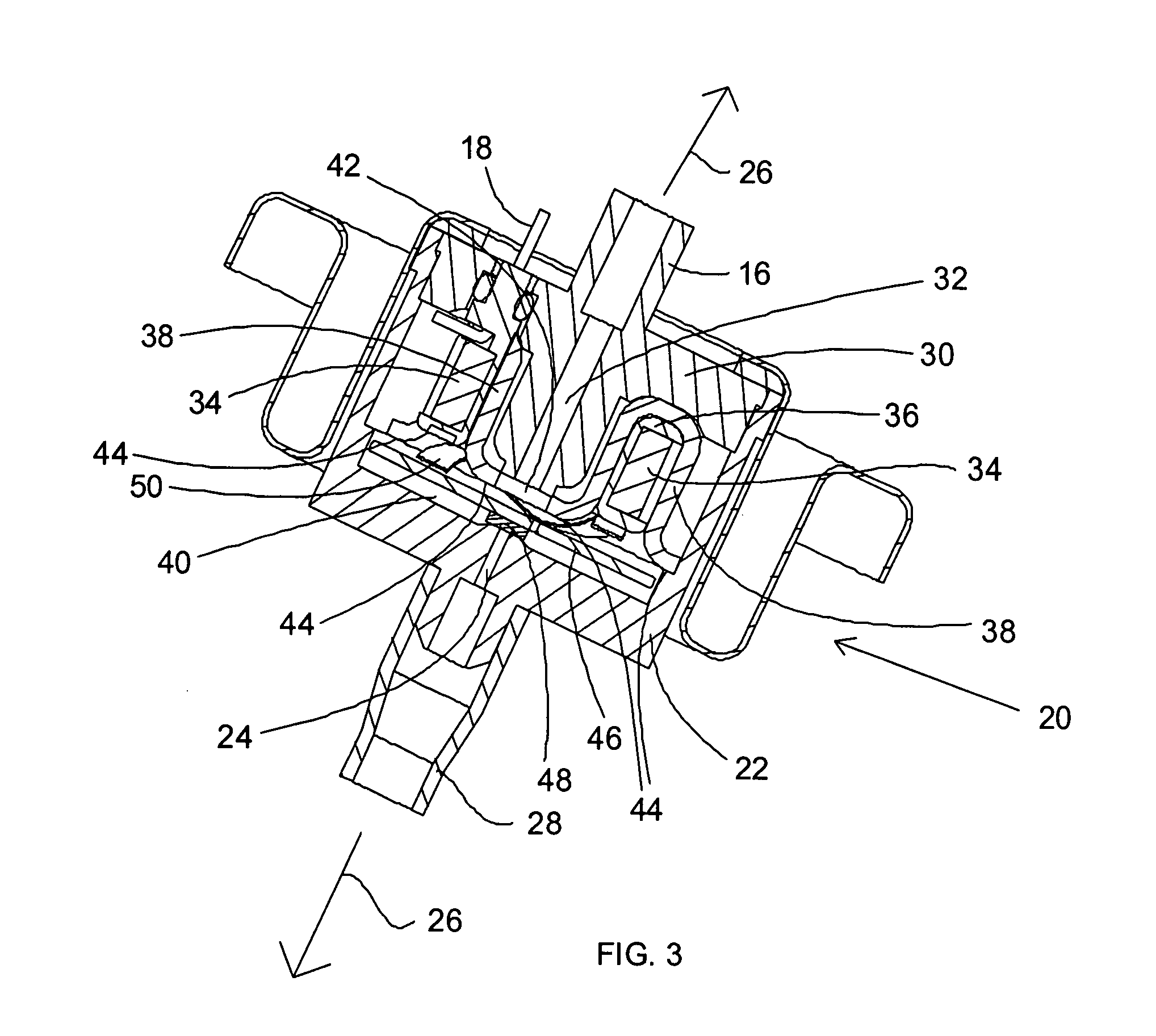Compact solenoid valve
- Summary
- Abstract
- Description
- Claims
- Application Information
AI Technical Summary
Benefits of technology
Problems solved by technology
Method used
Image
Examples
Embodiment Construction
[0022]In each of the drawings, like parts are denoted by like numerical indicia. In preferred embodiments, the present invention is actuated by commercially available electrical controls suitable for the intended usage of the dispensing apparatus as a whole, taking into account the size of the apparatus, where it is placed in relation to usage, the intended users, etc. in a conventional manner. Such commercially available controls are not considered part of the claimed invention. Various pulsing controls suitable for the embodiments shown herein are of the type which have been sold by Tri-Tech, LLC of Mishawaka, Ind.
[0023]In general, FIGS. 1-3 relate to an internally mounted aerosol can version of the invention. FIG. 4 relates to an additional embodiment of an externally mounted aerosol can where the existing outset stem of the can seats onto the inlet of the invention apparatus, as for example, by an 0-ring seal connection. FIGS. 5 and 6 relate to three way ported valve configurati...
PUM
 Login to View More
Login to View More Abstract
Description
Claims
Application Information
 Login to View More
Login to View More - R&D
- Intellectual Property
- Life Sciences
- Materials
- Tech Scout
- Unparalleled Data Quality
- Higher Quality Content
- 60% Fewer Hallucinations
Browse by: Latest US Patents, China's latest patents, Technical Efficacy Thesaurus, Application Domain, Technology Topic, Popular Technical Reports.
© 2025 PatSnap. All rights reserved.Legal|Privacy policy|Modern Slavery Act Transparency Statement|Sitemap|About US| Contact US: help@patsnap.com



